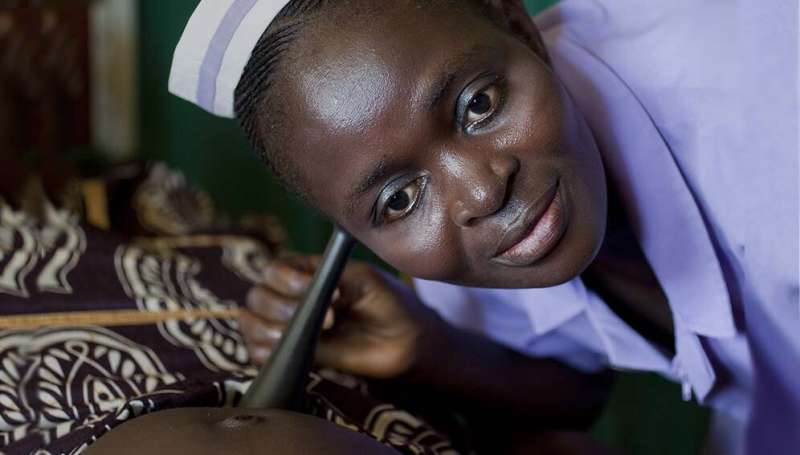Limited investment, gender disparities and inequitable access to education fuel midwife shortage

Midwives could prevent 4.3 million infant and maternal deaths each year by 2035, but only if critical shortages are addressed.
So says a report on the global state of midwifery which highlights the limited investment, gender disparities and inequitable access to education that has resulted in gaps in maternal health services—especially in the low-income countries that need them most.
"Evidence shows investments in women and families through investments in midwifery are effective and make a difference," says Sally Pairman, chief executive of the International Confederation of Midwives. "If government[s] want healthy populations, they have to take this seriously."
Midwives are core members of the sexual, reproductive, maternal, newborn and adolescent health (SRMNAH) workforce. Responsible for providing antenatal and postnatal care, they also provide family planning, detect and treat sexually transmitted infections, and contribute to a range of community healthcare needs.
However, there is currently a global shortage of 900,000 midwives, according to the 2021 State of World's Midwifery report, published on 5 May by the International Confederation of Midwives and partners the WHO and the United Nations Population Fund.
Documenting the world's SRMNAH workforce, the report includes data from all 194 WHO member states. It builds on previous reports in the series published in 2011 and 2014 to show a global gap of 1.1 million full-time SRMNAH workers, mostly midwives and mostly in Africa.
Pauline Bakibinga, an associate research scientist at the African Population and Health Research Center, based in Nairobi, Kenya, said: "This is a result of years of limited investments in the health sectors of especially the low- and middle-income countries (LMICs), which as no surprise have the worst SRMNAH indicators."
One in three births globally will take place in Africa by 2050, according to theWHO. In the Sub-Saharan African region alone, fewer than 50 percent of all births are assisted by a skilled birth attendant,says the body.
Poor work conditions, limited career opportunities and low pay push midwives out of Africa and on to wealthier nations in search of better opportunities, says Bakibinga. Those who stay are often inadequately skilled.
"Some institutions still have a narrow focus on midwifery without empowering graduates to attend to the wider needs of their patients," she added, calling for updated curricular and financial support to boost training programs.
"Strategic partnerships with countries that receive midwives from LMICs are also necessary to share best practices and identify strategies to ensure that countries retain well trained and motivated professionals," she says.
Over 90 percent of the midwifery workforce are women in countries that submitted data to the report. Only half reported having midwife leaders within the national ministries of health.
"Gender stratification in midwifery persists and reflects a bigger challenge within the health sector with women taking on more service delivery roles while men tend to be in leadership positions," Bakibinga says.
Access to education is another barrier to midwifery in low-income countries, says Kate Wade, a Cape Town-based midwife who has practiced across the continent including in Benin, Sierra Leone, Ethiopia and Tanzania.
"Many don't have access to basic education. Without that, it's impossible to think about tertiary education options like midwifery," she says. In some regions, women are barred from education opportunities in general.
In Sub-Saharan Africa, nine million girls will never attend school, compared to six million boys according to UNESCO.
Genderand inequality are likely the root of barriers to midwifery careers, according to Pairman, from the International Confederation of Midwives. "Until governments start to tackle those issues and bring in more gender-positive policies and processes, the barriers will continue."
For Wade, change won't happen until women's health gains as much attention as COVID-19to draw the necessary political and financial will.
The pandemic has underscored the value of midwifery amid overburdened health systems, the closing of maternity facilities, and fears among women of attending hospital.
"We've seen midwives in many parts of the world being able to keep those services running. They've gotten creative and faced risks to provide care in their communities," said Pairman. "We need to invest in midwives as a primary health service to build back better from the pandemic."
More information: 2021 State of World's Midwifery report




















